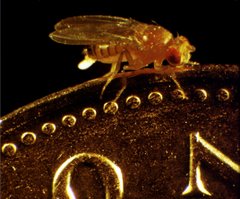I've got to hand it to Nature Magazine, intrepid journal that it is, breaking open a heretofore unheard of story: grad schools, particularly in the biomedical sciences, are training too many grad students; this has led to a surge in biomedical postdocs but, amazingly, the number of tenured faculty positions has not concomitantly risen...
If this is news to you as well, then welcome to life outside that rock you were living under.
In today's Nature Magazine (email me if you aren't attached to an institution that has a subscription and I'll send you the article) Erika Check discussed a recent Federation of American Societies for Experimental Biology (FASEB) publication that lays out the bad news in easy-to-understand graphs and charts. I seriously have to hand it to Erika; she's been one of the few science writers to discuss the ugly truth: we're training too many scientists for the current number of academic jobs and level of federal funding available. I truly look forward to reading her well-researched, balanced articles each week.
I haven't fully digested the FASEB report yet, but the news isn't good. They basically show that grad school matriculation has gone up (particularly among non-residents) but that GRE scores haven't. So no arguing that there are more qualified applicants than in the 1970's... grad schools have just become big PhD factories. (Note: Anyone interested in the topic of S&E graduate education should read Goldman and Massy's 2000 book by the same name The PhD Factory: Training and Employment of Science and Engineering Doctorates in the United States)
The FASEB report further states that NIH funding of training grants for grad students and postdocs has gone down while demand for these grants has gone up. So we're training more scientists but the money is not coming from training grants but from research grants. This may seem like a negligible difference unless you've ever been tethered to the bench by a tyrannical boss supporting you off of his or her research grant. Sadly, not much training happens in these situations.
Ah, but what to do? NIH has already been given its Christmas bonus in the form of a budget doubling between 1999 and 2003. And much like the grasshopper in the fable of the Grasshopper and the Ant, most of the money from the budget doubling was frittered away like a summer afternoon.
But here's the real news flash: it's beginning to get a little chilly, and the worst is still yet to come.
Thank God I left the bench.
Wednesday, August 22, 2007
Subscribe to:
Post Comments (Atom)


No comments:
Post a Comment